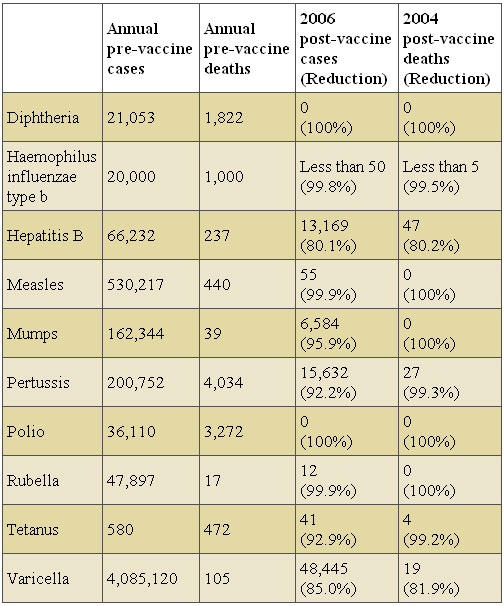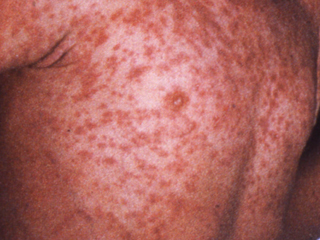

| Home |
| History Lesson |
| What is Autism? |
| What is the MMR Vaccine? |
| Is There a Link? |
| Just the Facts |
| What Parents Need to Know |
| Conclusion |
| References |
What is the MMR vaccine? |
|
The MMR is an acronym for Measles-Mumps-Rubella. The MMR vaccine is a combination 3-in-1 2 dose vaccine that was initially licensed in 1971, but more widely accepted in the early 1980s. It is considered by the American Academy of Pediatrics to be one of the most important immunizations for children and that is why it is required for school entry (Fisher, 2006).
Why is the MMR vaccine so important?
Vaccine Effectiveness

Measles:
An acute, contagious viral disease, usually occurring in childhood and characterized by eruption of red spots on the skin, fever, and catarrhal symptoms. Also called rubeola. The rubeola virus causes "red measles," also known as "hard measles" or just "measles." Although most people recover without problems, rubeola can lead to pneumonia or inflammation of the brain (encephalitis) (Measles, 2009).
Mumps:
An acute, inflammatory, contagious disease caused by a paramyxovirus and characterized by swelling of the salivary glands, especially the parotids, and sometimes of the pancreas, ovaries, or testes. Complications of mumps are potentially serious, but rare (Mumps, 2009).
Rubella:
The rubella virus causes "German measles," also known as "three-day measles." This is usually a milder disease than red measles. However, this virus can cause significant birth defects if an infected pregnant woman passes the virus to her unborn child (Measles, 2009).
|
||

